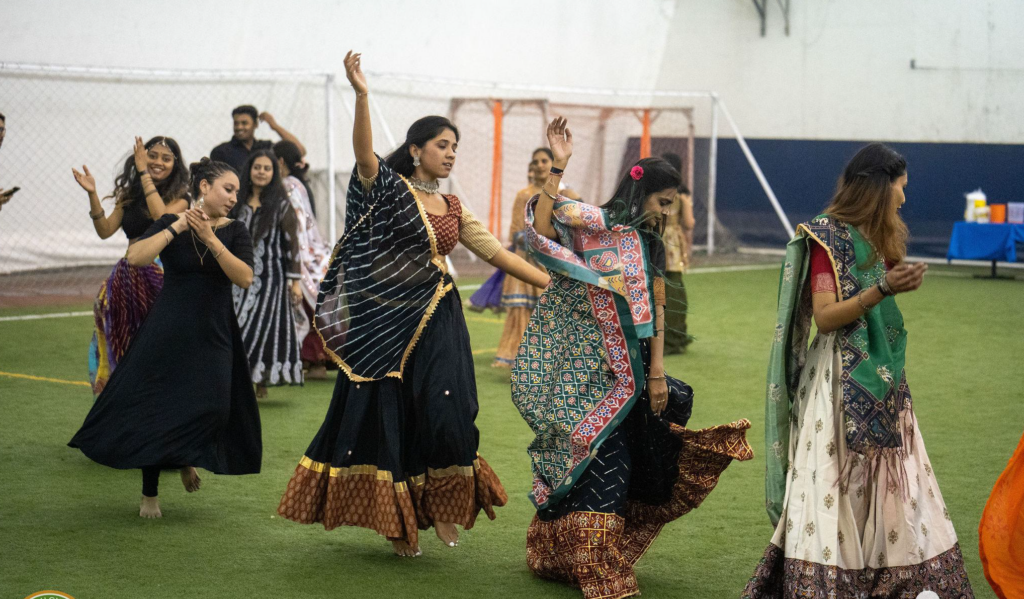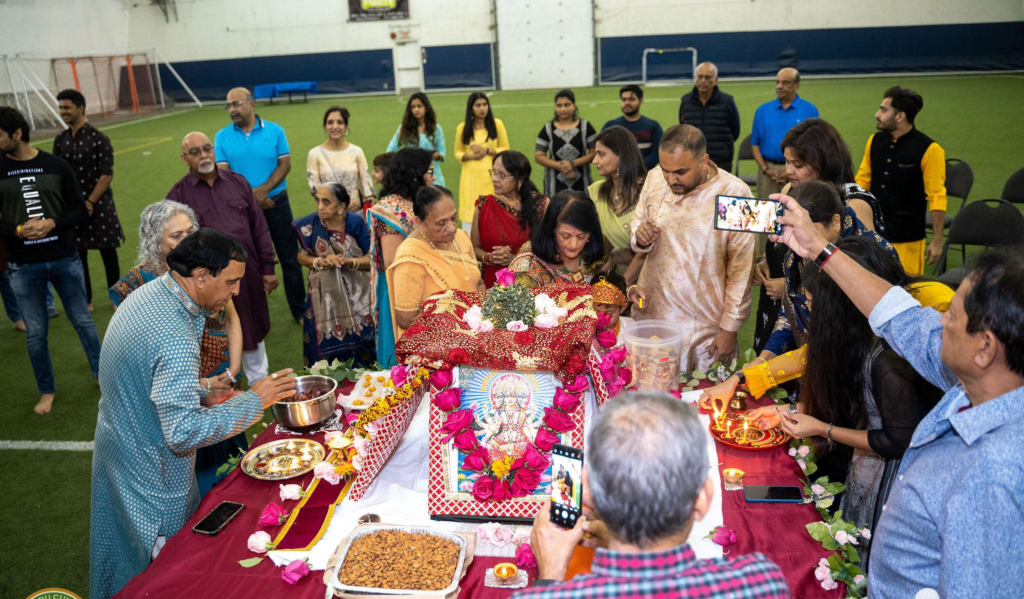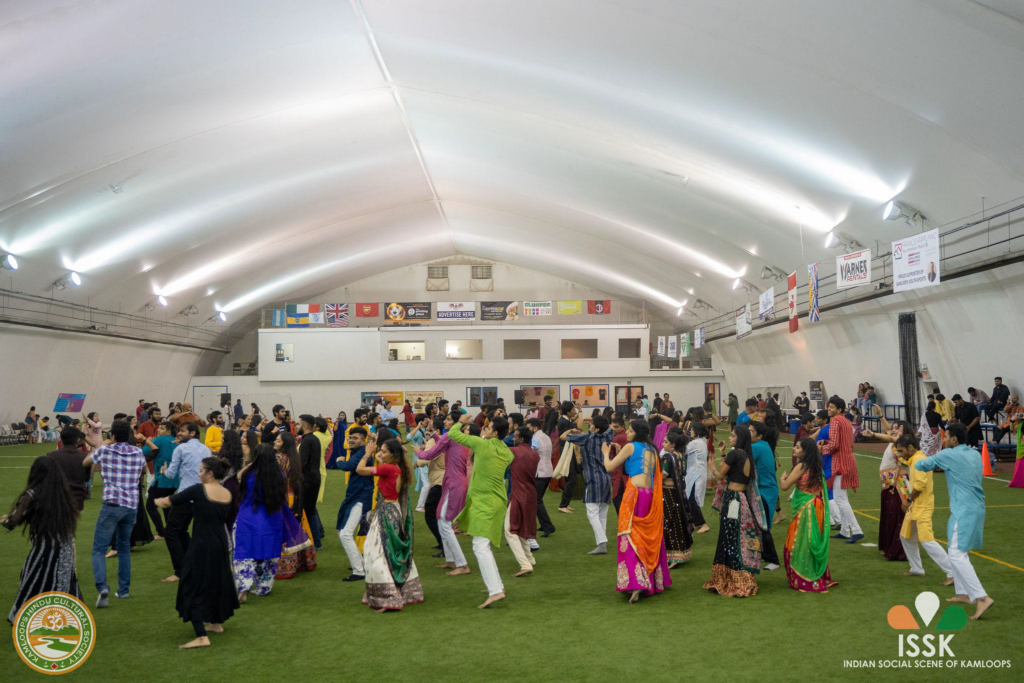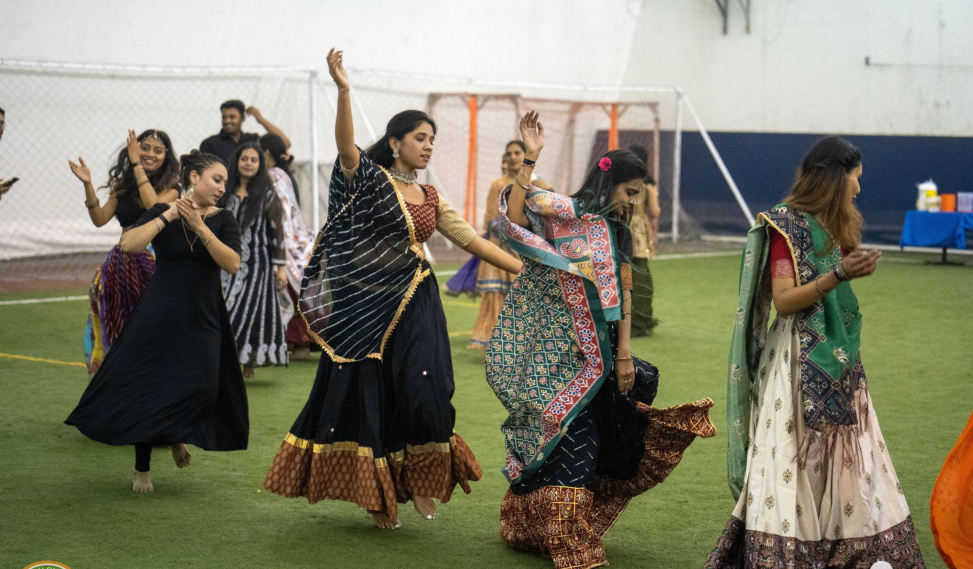Written by Krupa Gadhwana
Navratri 2022 is finally here. The annual Hindu festival started from September 26 and ended on October 5. It is the festival of nine nights(NAV- nine RATRI- nights), which is full of vigour, madness, food, devotion and garba. Indian Social Scene of Kamloops (ISSK), coming out with folk genre dance and music, and an amazing line of vibrant songs, were the ones who proudly organized the most awaited Garba of the year. The festival was a dance and Music extravaganza. It was held at Kamloops Soccer Dome.

Navratri night occurred from Thursday, September 29th, 2022 to Saturday, October 1st, 2022 at the Kamloops Soccer Dome. In this event TRU students as well as families joined to celebrate. There were total 2 pass which people can purchase either a season pass, which was valid for all three days worth at forty dollars or a session pass for particular days if someone wanted to visit just one and then they can buy session pass worth fifteen dollars moreover – All the tickets were non-refundable and non- transferable. to add on, no tickets were sold at the door and Free entry to all sessions for Kids under 16. Garba started at 6 PM and lasted until midnight. On friday, there was Afternoon Milap and lunch where childreans can play games, adult games such as chess was also included and for women Henna(Mehndi/Tattoo) program was there. where one woman was applying henna on another woman’s hand. as well as delicious lunch was offered. At night, Arti, Prasad was done first then people started to do Graba on song beats.
Indian Social Scene of Kamloops (ISSK) decided to hold Navratri to celebrate as well as to make sure that Indian people and all other people who believe in or celebrate should not feel left out in celebrating festivals like they celebrate in their own country. They wanted to make sure Indian people enjoyed the festival by meeting people and dancing together.

History
The conflict between Goddess Durga and the demon Mahishasura is the tale connected to Navratri which shows signifiace . Mahishasura was taught that only a woman could kill him after Lord Brahma had given him immortality. The Gods failed to stop him as he assaulted Trilok (Earth, Heaven, and Hell). Finally, Goddess Durga, who was created by Lords Brahma, Vishnu, and Shiva in unison, vanquished Mahishasura. The monster kept shifting his forms while they battled for 15 days. Mahishasura would assume many identities in order to
confound Goddess Durga. Finally, Goddess Durga killed him with her trishul when he transformed into a buffalo. Mahishasura was slain on the Mahalaya holiday.
During Navratri, people congregate to honour Durga, the mother goddess who bears severalweapons in her arms. The major reason we celebrate Durga for nine days is because she is most known for vanquishing an evil demon in a fight that lasted nine days and nights. There is a lot of dancing throughout the celebration. In this event, two different forms of dance are presented. The first is garba, a circle dance in which participants clap their hands. The other is called Raas, and it involves dancing while using wooden sticks called dandiyas. The crowd joins in on refrains and claps hands to indicate the tempo. People wear traditional dress. The duration of each performance is determined by the interaction between the artists, chanters, and audience. Dances honour women, celebrate fertility, and pay homage to a variety of mother deities. The dances traditionally signify a girl’s first menstrual cycle in Gujarat and
subsequently her impending marriage.
Navratra Akhand Jyoti

Akhand Navratra During the Navratri celebration, a Jyoti—an oil lamp—burns constantly for nine to ten days in homage to the almighty Devi (Durga). A Jyoti is a crucial component in puja, particularly during arti(prayer). Which was the center attraction of ISSK organized festival celebration. An everlasting flame is referred to as an Akhand Jyoti.

Following particular rites, the jyot burns continuously. For instance, according to the Vedas, a Diya lit with oil should be placed next to the goddess on her right side. Ghee-coated Diya must be stored on the left side.And during these nine days, devotees light the Akhand Jyoti or the eternal lamp to seek the Goddess’ blessings and invite auspiciousness to their homes.
You can see people’s bright smiles while performing the dance in the video, the starting scene where people hold thali while praying to goddess Durga. And after prayer they started dancing. At last, it was a very joyful event.

(Video not uploading, pending. – Liam)


Leave a Reply